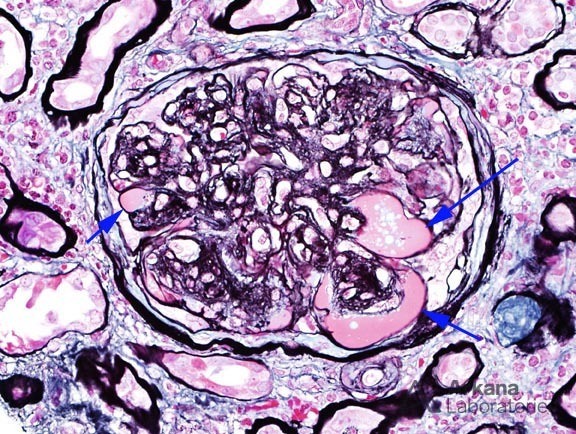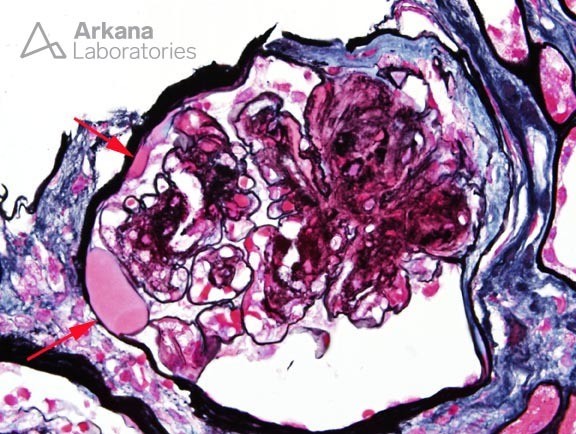Protein Insudative Lesions in Diabetic Glomerulopathy
Diffuse and nodular glomerulosclerosis is the classic appearance of diabetic glomerulopathy. However, diabetic nephropathy also includes so-called insudative lesions including “Fibrin Caps” and “Capsular Drops”. These lesions are characteristically seen in diabetics with nephrotic range proteinuria and are thought to be the result of ‘insudation’ of protein and other serum products into the space between the cell lining and its supporting basement membrane. In the case of the Fibrin Cap, the lesion is seen between the endothelium and the glomerular basement membrane (Blue Arrows, Jones Silver 400x). Fibrin cap is a misnomer because there is no fibrin in the lesion, but it remains in use for historical reasons. The Capsular Drop is seen in Bowman’s capsule between the parietal epithelial cell and the basement membrane of Bowman’s capsule (Red Arrows, SMMT 400x).
A discussion of diabetic nephropathy, including the insudative lesions, can be found here:
Tervaert JWC, Mooyaart AL, Amann K, Cohen AH, Cook HT, Drachenberg CB, Ferrario F, Fogo AB, Haas M, de Heer E, Joh K, Noël LH, Radhakrishnan J, Seshan SV, Bajema IM, Bruijn JA: Pathologic classification of diabetic nephropathy. J Am Soc Nephrol 2010, 21:556-63. http://jasn.asnjournals.org/content/21/4/556.long
Quick note: This post is to be used for informational purposes only and does not constitute medical or health advice. Each person should consult their own doctor with respect to matters referenced. Arkana Laboratories assumes no liability for actions taken in reliance upon the information contained herein.



